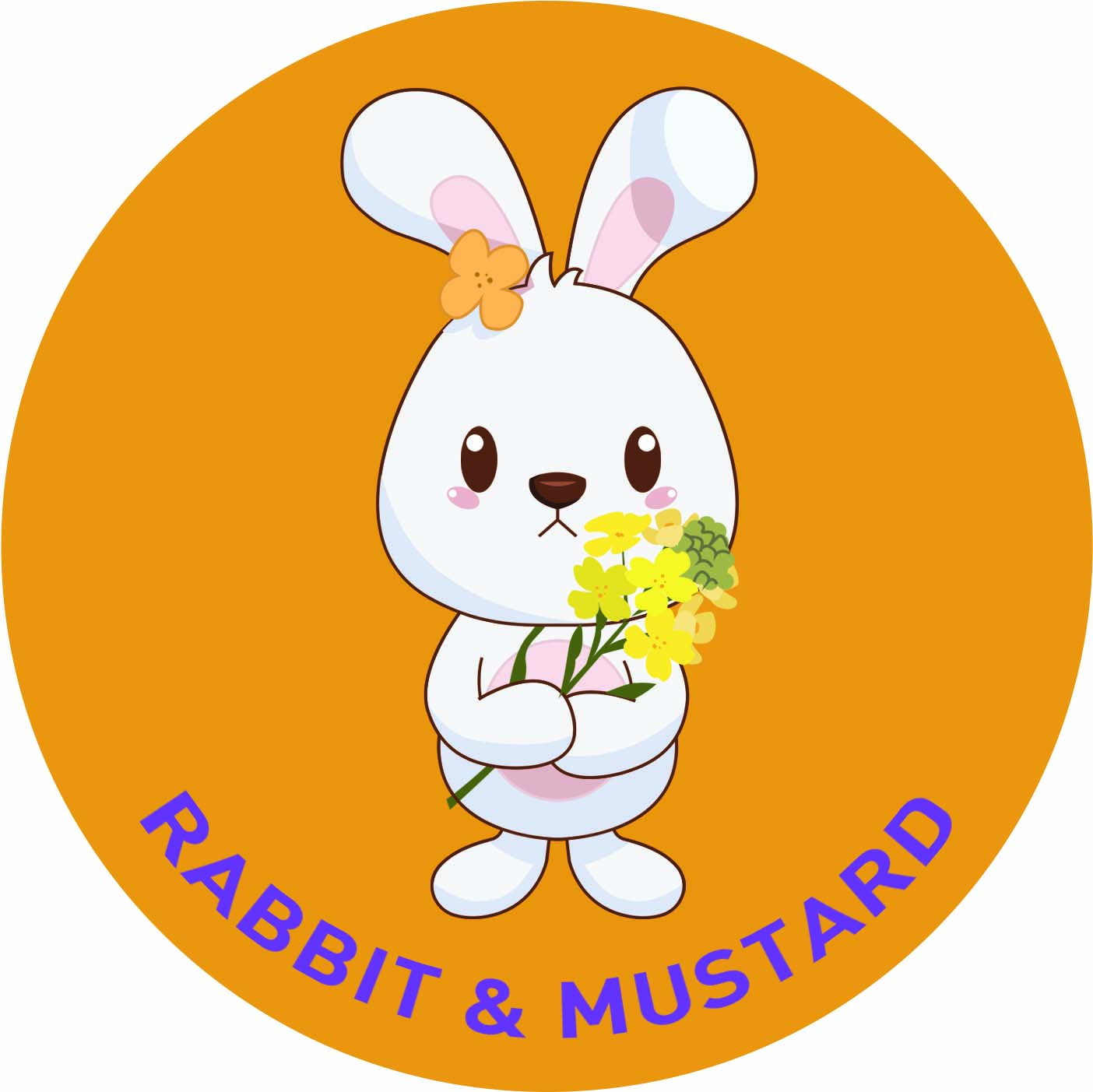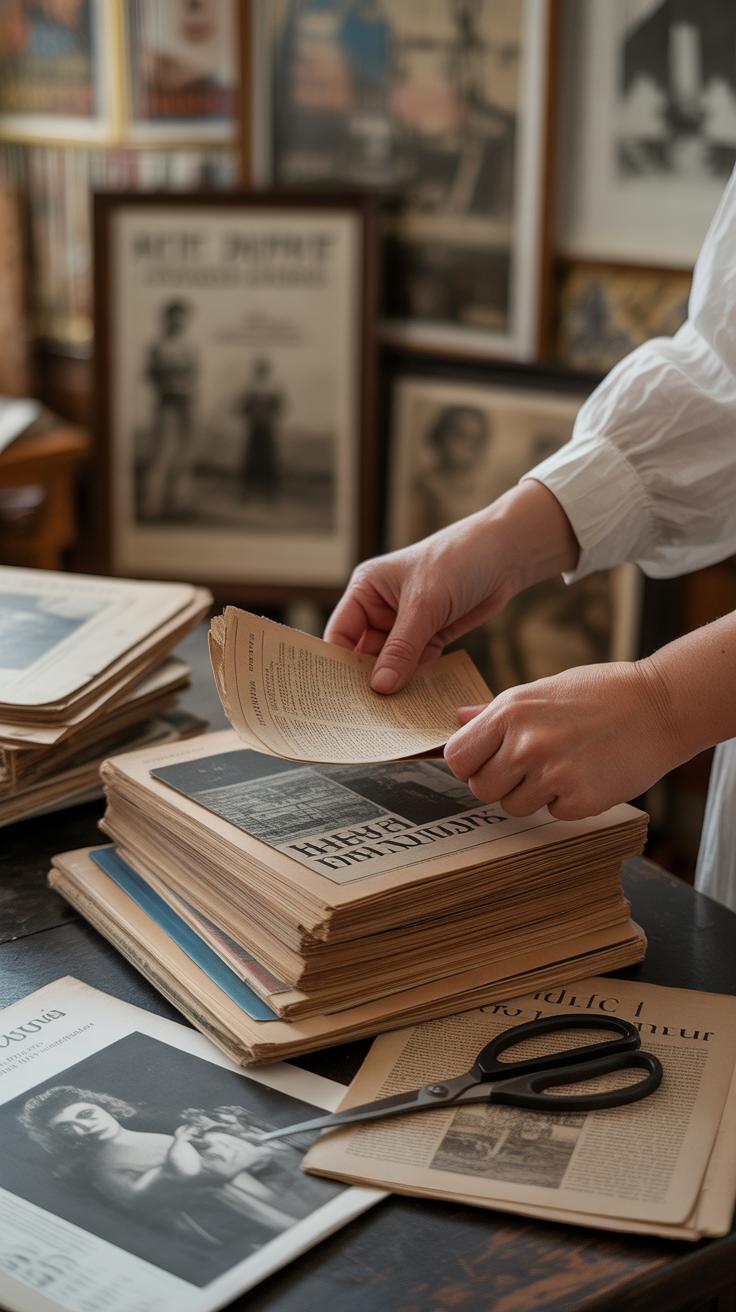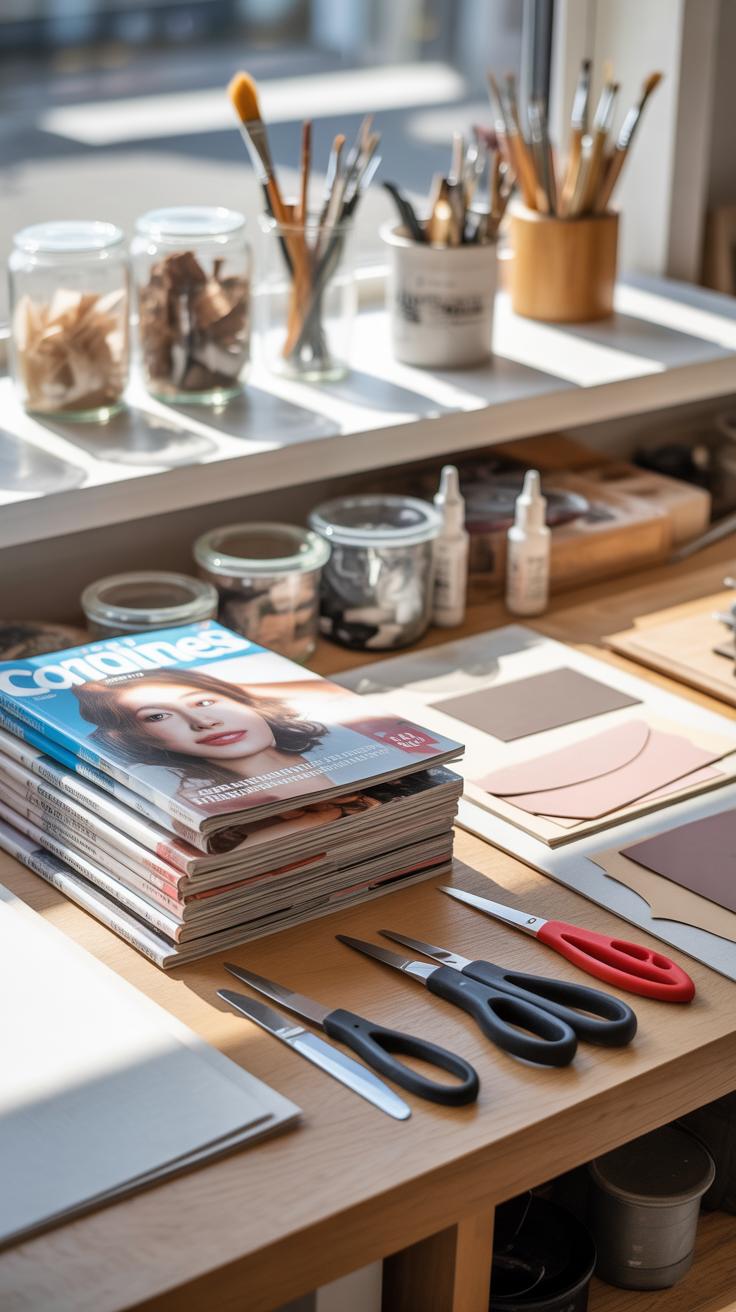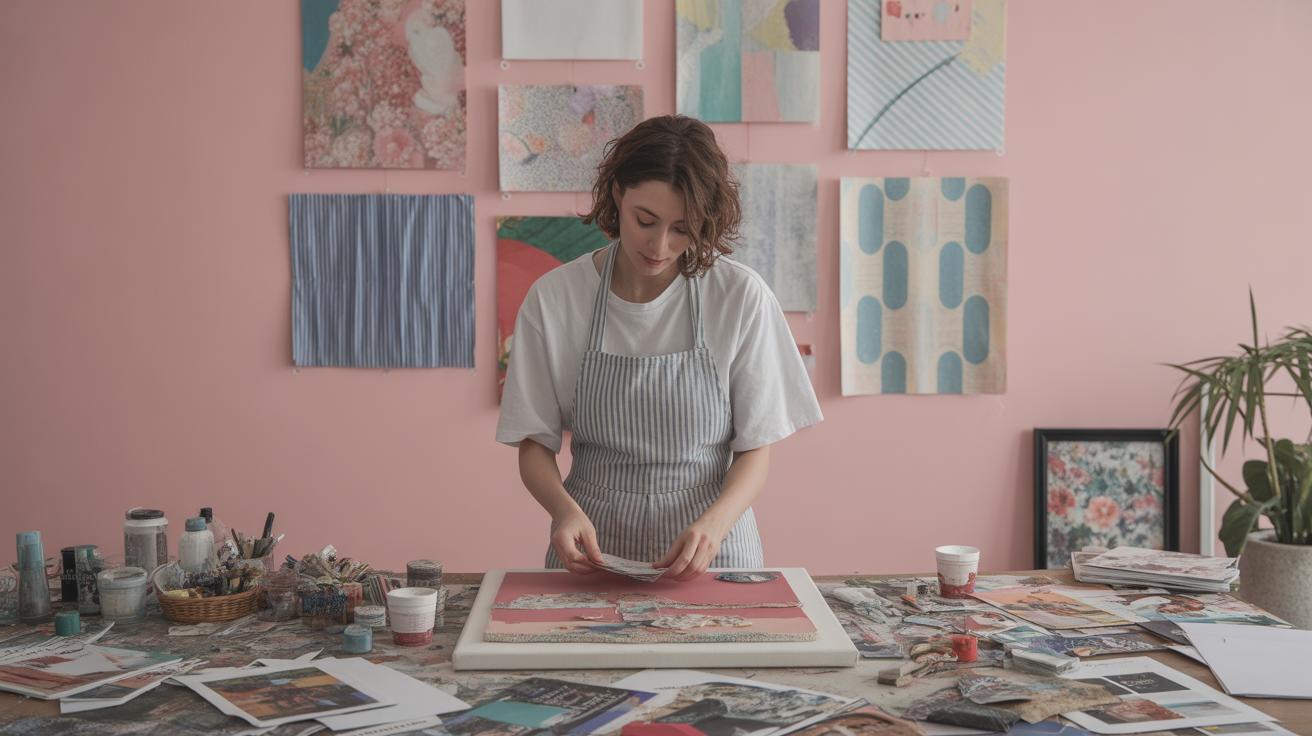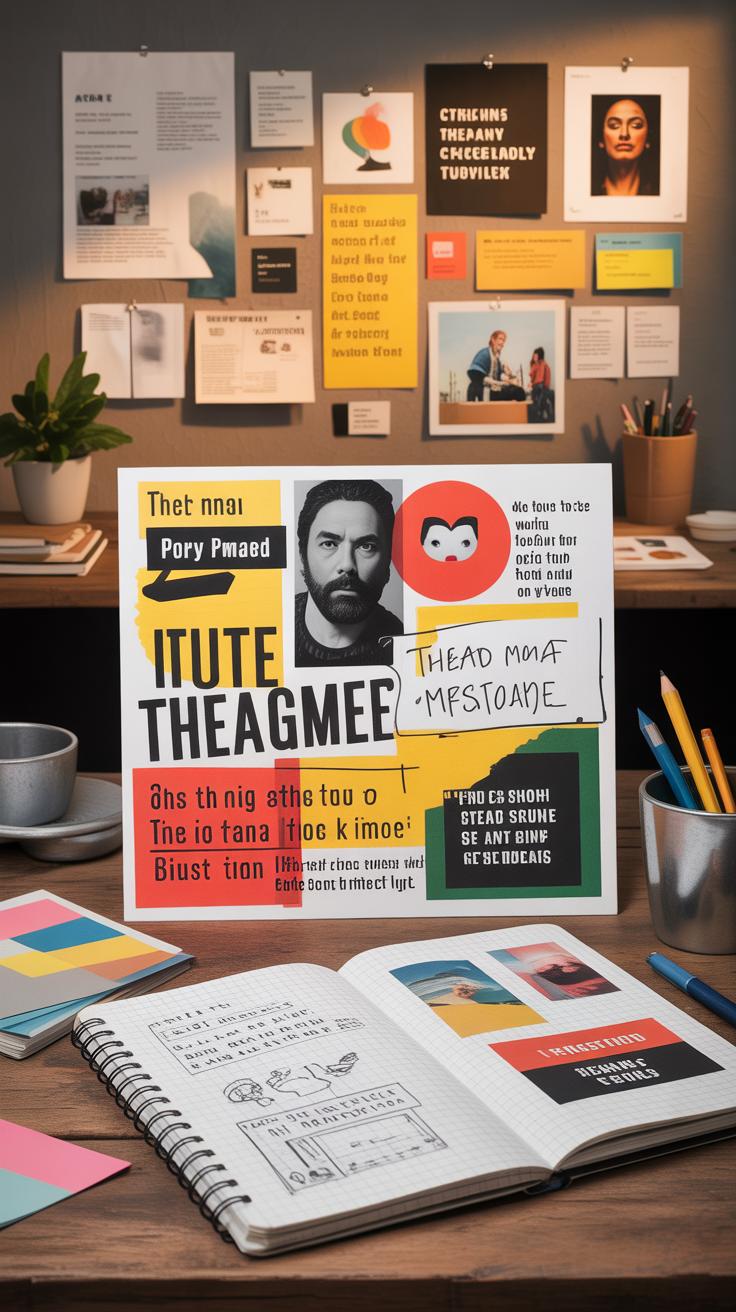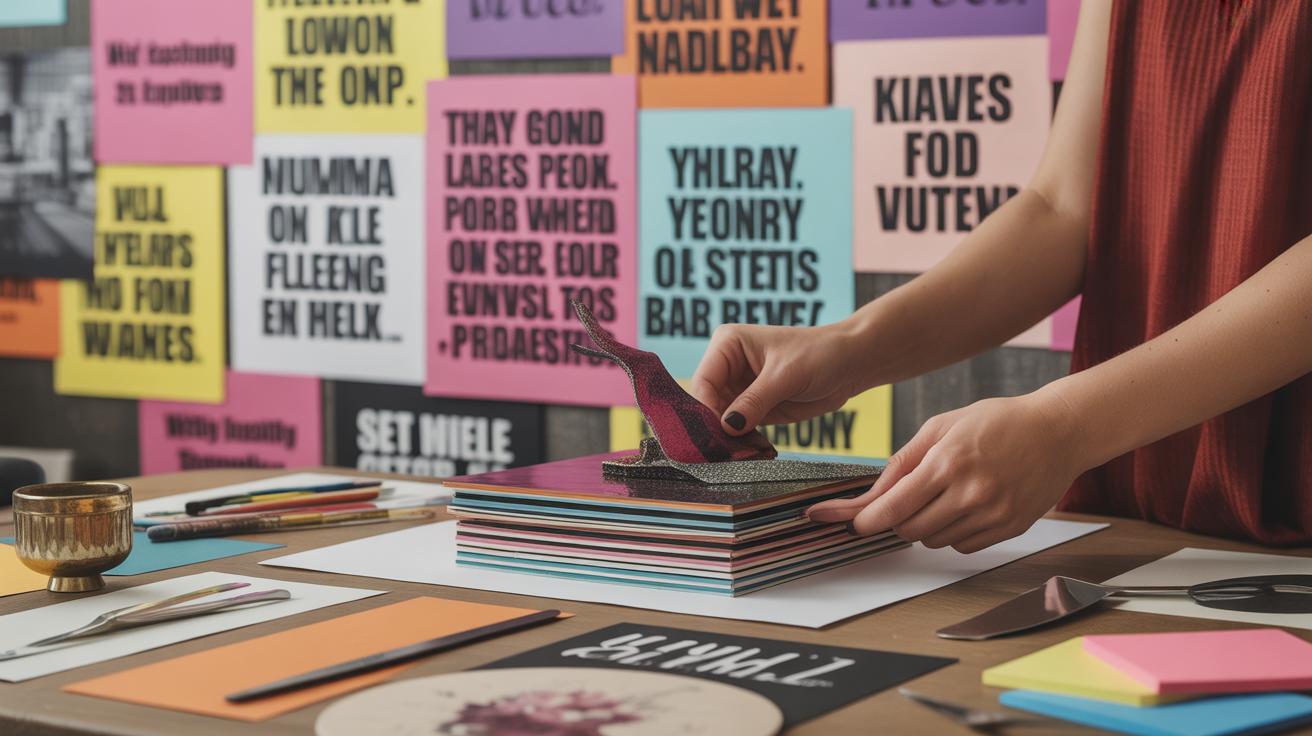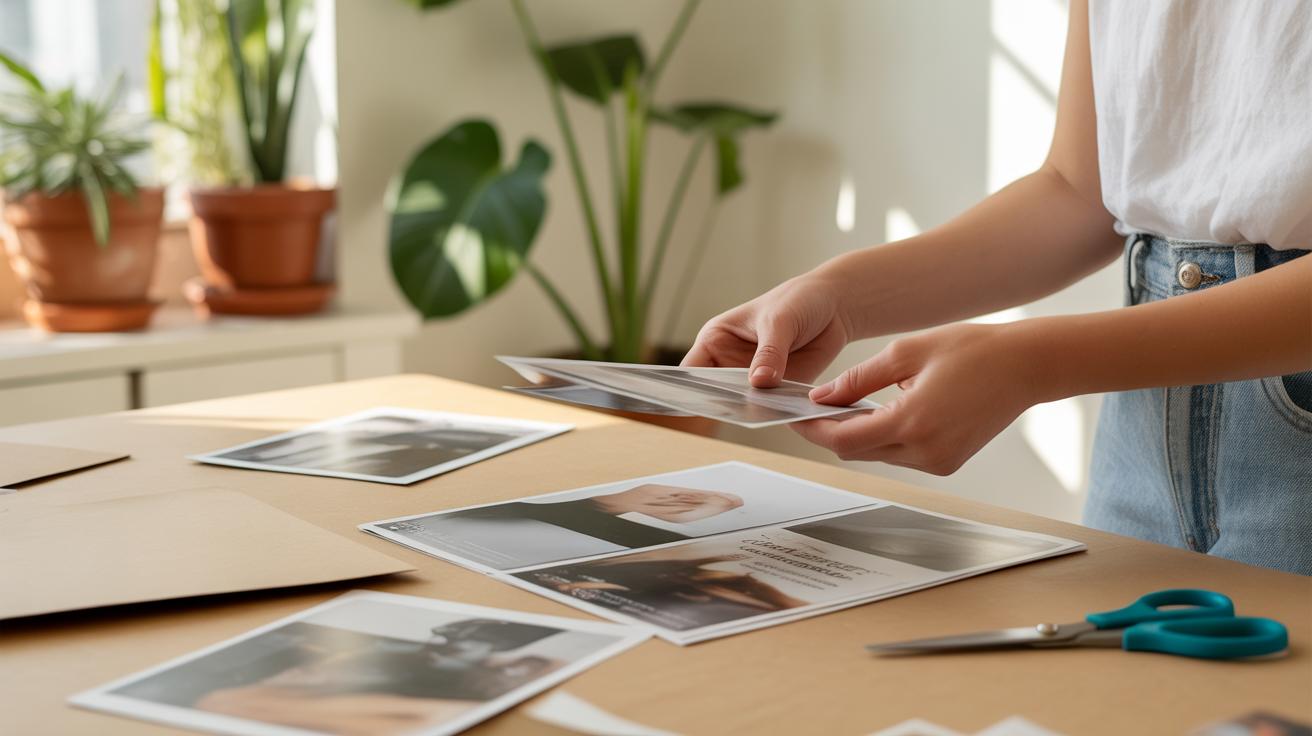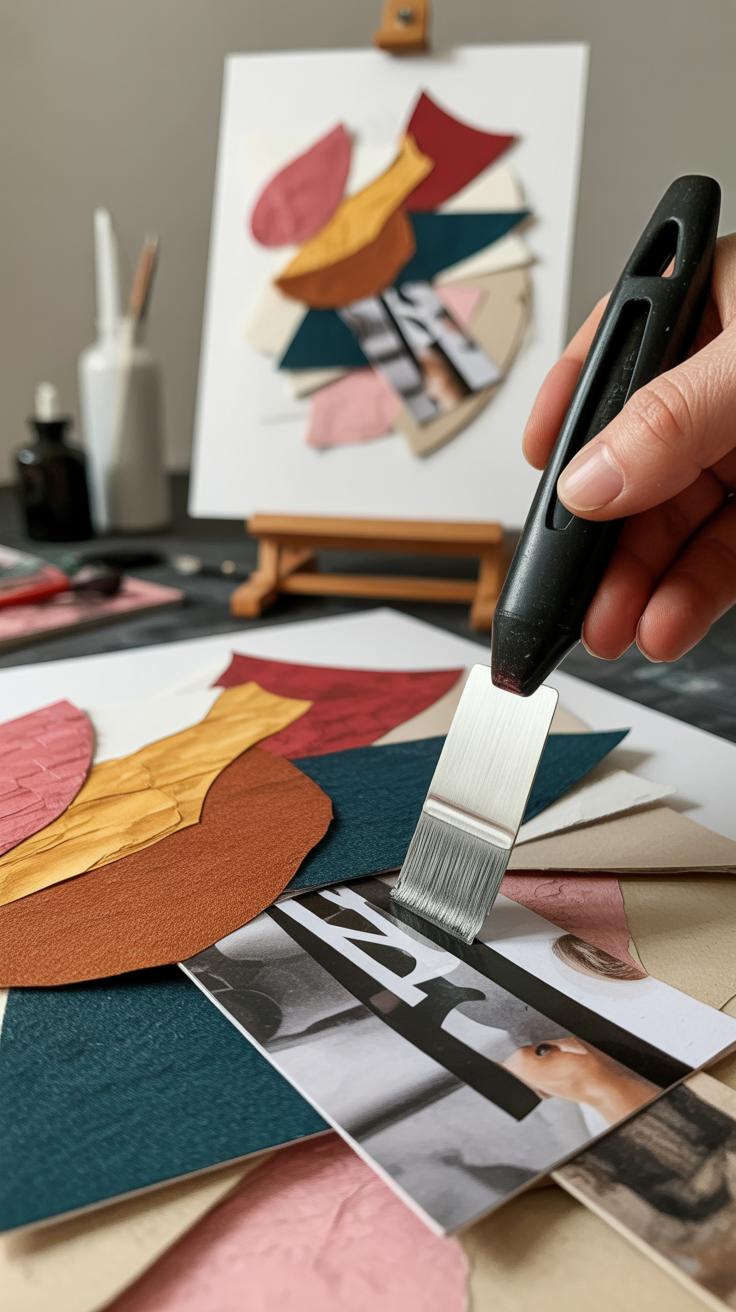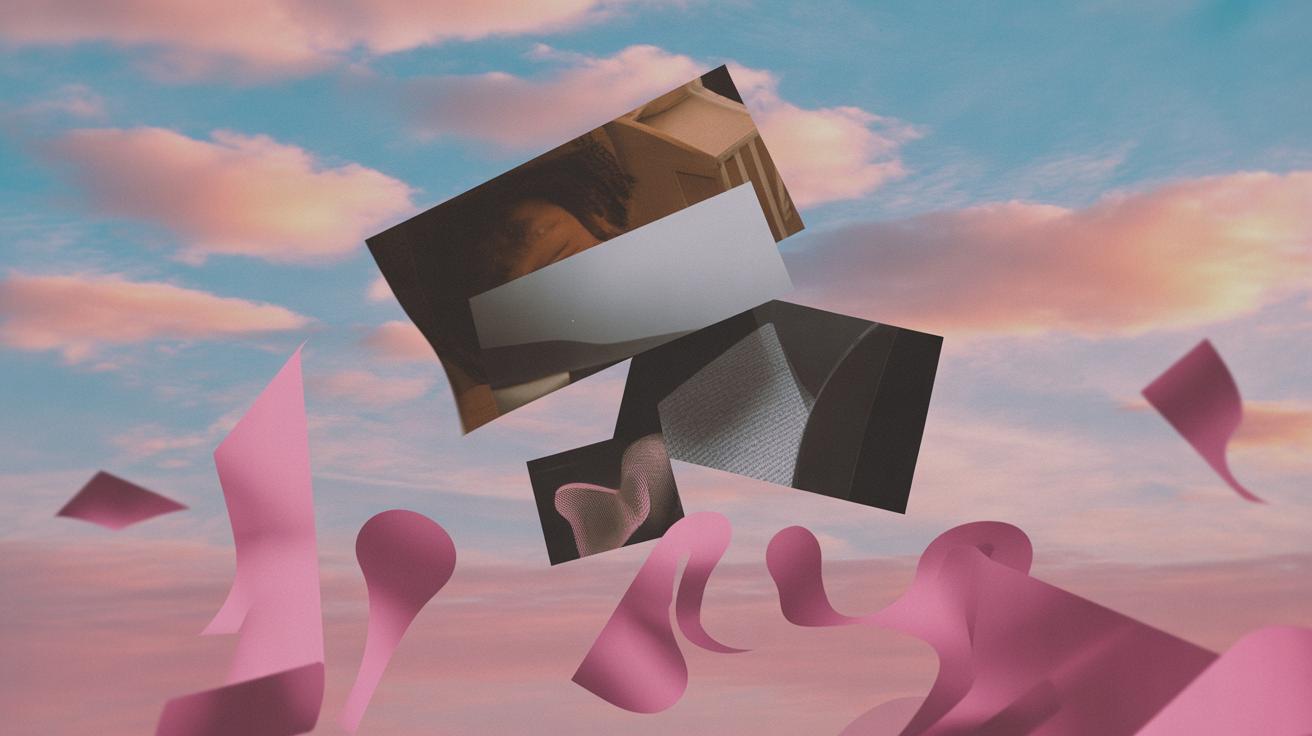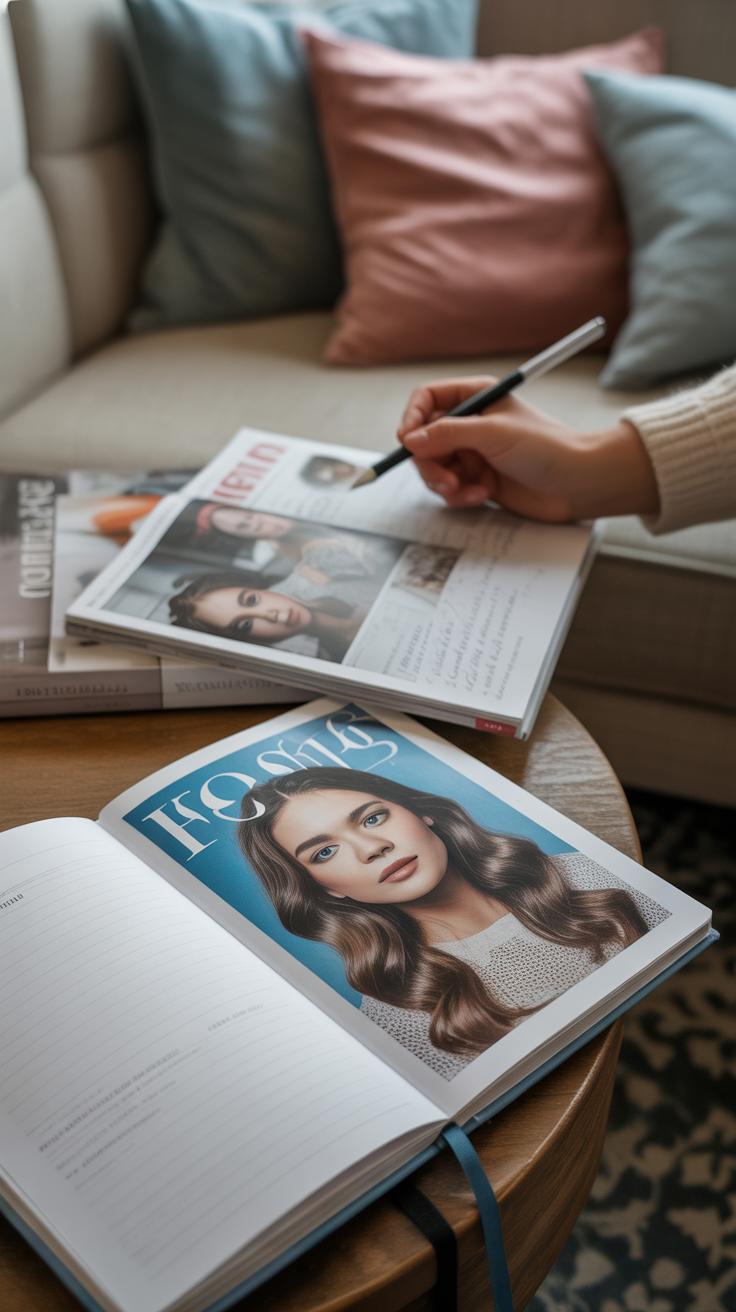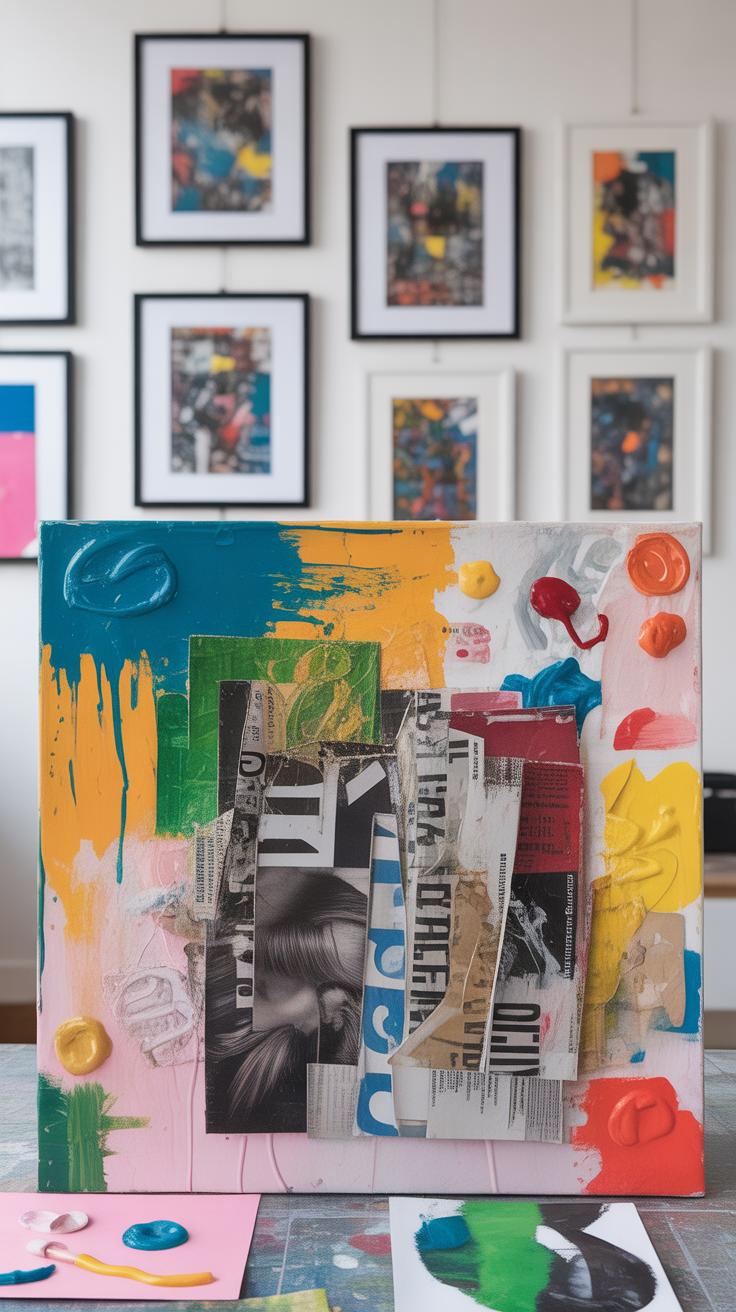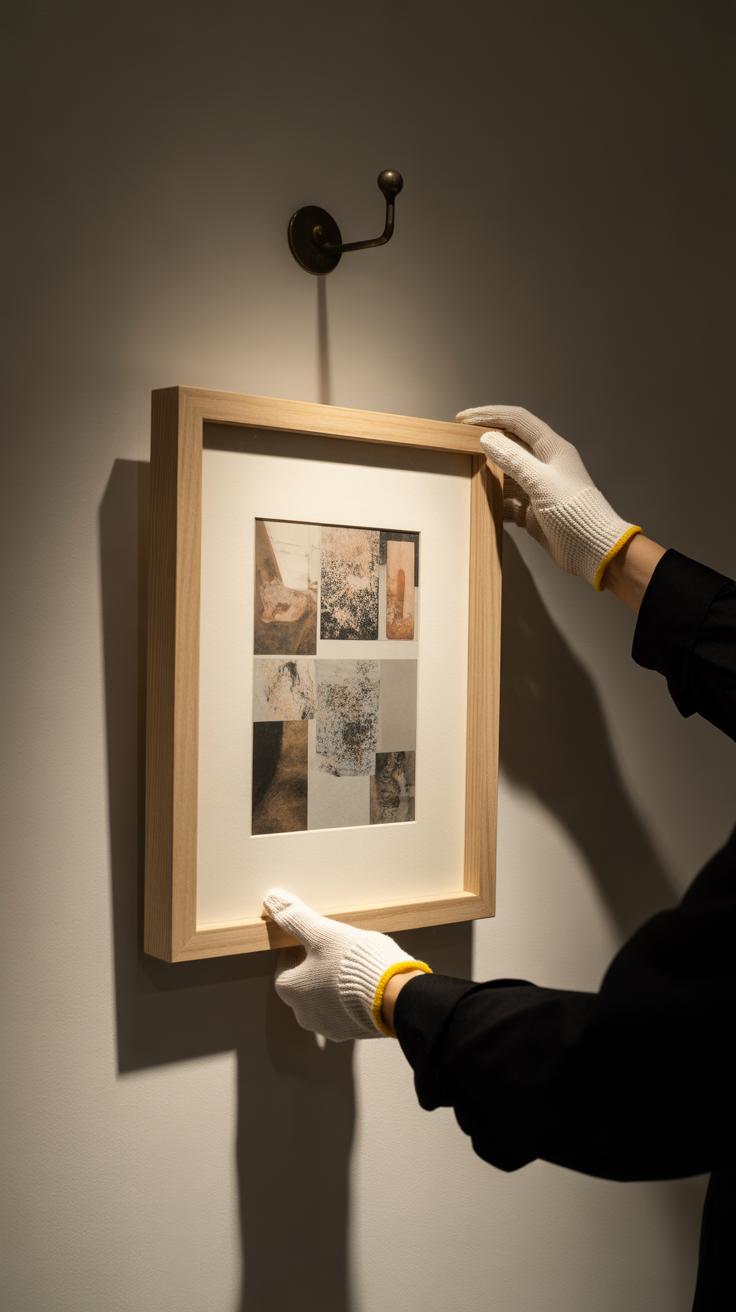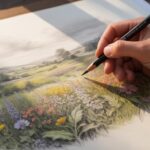Introduction
Magazine collage is a unique art form where artists use clippings from magazines to create new images or tell stories. This method allows you to combine colors, textures, and ideas easily found in everyday magazines. By cutting and gluing these snippets, you can express your thoughts freely and create interesting visuals that stand out.
This article explores Magazine Collage Ideas That Will Transform Your Artistic Practice. You will learn how this technique evolved, how to start using magazine collage effectively, and different ways to make your artwork more expressive. You’ll get tips on tools, themes, and styles to boost your creativity step by step.
Understanding Magazine Collage and Its History
Magazine collage means assembling cut-outs from magazines into a new image or composition. It’s a way to mix visuals and text from popular printed media, often layering them to create fresh stories or abstract designs. This form of collage lets you play with the familiar—ads, photos, headlines—by shifting their context. It’s an accessible entry point into collage since magazines are everywhere and loaded with colorful, diverse content.
The roots of magazine collage stretch back to early 20th-century art movements like Cubism and Dada. Artists began cutting and pasting bits of paper to challenge traditional painting. They wanted to include everyday life in art, and magazines, being mass-produced, were perfect for that. So, what started more like a rebellious act became an accepted artistic method over time.
Today, magazine collage still holds a unique place. It’s not just for hobbyists. You see it in galleries, design studios, and even digital art. Many artists use physical magazine clippings to explore identity, politics, or culture, layering meaning beneath the surface of glossy images. It’s both playful and critical—telling stories while questioning how media shapes them.
Early Examples and Modern Uses
The first instances of collage involved newspapers and scraps, but magazines soon became a favorite source. Around the 1910s and 1920s, artists like Picasso and Braque incorporated magazine pieces to add texture and new visual elements. They weren’t just decorating; they were challenging what art could be.
Fast forward to today, magazine collage isn’t just about fine art. You find it in zines, fashion boards, album covers, and social activism. What’s interesting is how people blend traditional clipping with digital work—scanning, layering in software, then printing again.
Nowadays, magazine collages can be simple, fast projects or elaborate works spanning months. They can convey political messages, personal memories, or aesthetic experiments. The variety feels endless, which might explain why so many different creatives come back to it.
Key Artists Who Shaped Collage Art
Some names are almost unavoidable when talking collage. Pablo Picasso, who helped pioneer the technique in Cubism, first introduced newspaper and magazine scraps in the early 20th century, breaking new ground for visual storytelling. His work made it clear that you could mix representation and reality in bold ways.
Hannah Höch took collage further with photomontages that critiqued gender and society during the Weimar Republic era. I find her work quite provocative, maybe because it’s so direct yet fragmented. It shows how collage can carry sharp social commentary.
Later, Robert Rauschenberg’s combines blurred lines between painting and collage with found objects and magazine images. His approach feels less formal but powerful, bringing everyday materials into the gallery. Artists like these didn’t just use collage—they expanded its potential.
So, when you start working with magazine clippings, you’re linking to a long tradition full of challenge and creativity. What will you add to that story? The history seems open-ended enough to invite your own voice.
Gathering Materials and Tools for Magazine Collage
Selecting Magazines and Materials
Choosing your magazines can shape the direction of what you create. I often find myself torn between grabbing fashion magazines for their colors and textures or older ones with unusual typography. Sometimes the content matters less than the visual appeal. It’s fine to pick magazines based on unexpected details—like a background pattern or a quirky headline.
Besides magazines, gather other paper items—like postcards, maps, or old book pages. My drawer holds random clippings from flyers or packaging; they often add surprising textures. Keep in mind the paper quality. Glossy pages can be slicker but trickier to glue down. Matte pages might absorb glue and wrinkle. Which feels right to you? Maybe test both.
Essential Tools and Workspace Setup
Start with a good pair of scissors. I favor ones with a comfortable grip because you’ll be cutting a lot—sometimes finer details need smaller, sharper scissors. A craft knife could help, but it’s not a must. Also, grab a glue stick; it’s less messy than liquid glue and dries quickly. That said, some prefer matte or gel mediums—so, think about the effect you want.
Organizing your space can make or break your process. I learned that laying out everything in easy reach helps me keep a steady flow. Use small containers or trays to sort your cutouts. And keep your working surface clean—but not sterile. Sometimes I leave clippings around to jog ideas. Plus, natural light, if possible, makes it easier to see true colors and textures. How you arrange your tools might reveal your style too.
Basic Techniques to Create Your First Magazine Collage
Cutting and Arranging Pieces
Starting with cutting, you’ll want to focus on shapes that catch your eye—these don’t have to be perfect. Sometimes rough edges or uneven cuts add character, so don’t stress over every snip. Try experimenting with both delicate curves and sharp angles. Sometimes I found that randomly cutting out letters or fragments of images led me to unexpected ideas.
Once you have your pieces, lay them out loosely before gluing. It helps to move things around, overlap edges, or even flip pieces upside down – you might discover something more interesting this way. Ask yourself if the arrangement balances the colors and shapes well, but don’t obsess over precision. Sometimes asymmetry tells a better story. If a piece feels off, trust your gut and switch it out or relocate it.
Gluing and Securing Your Collage
When it comes to glue, a simple stick glue works well for small pieces and quick fixes. But for larger or heavier clippings, something like a glue stick designed for paper or a thin layer of PVA glue gives better hold without warping your paper. Avoid applying glue too thickly; it tends to wrinkle pages or cause bubbles.
To keep pieces firmly in place after gluing, press down gently with a clean tool—like a ruler or bone folder—or simply use your fingers, but be careful not to smear glue onto visible areas. Sometimes, I leave small weights on top until it dries to prevent curling. And if you make a mistake, you can usually lift pieces carefully and reposition them before the glue sets. It’s a bit knack, but practice helps you feel when things are sticky enough—or not.
Exploring Themes and Storytelling in Magazine Collage
Finding a Theme That Speaks to You
Choosing a theme often feels like the hardest step, yet it sets the entire tone of your collage. Think about what matters to you right now—questions you keep coming back to, things that stir your emotions or curiosity. It could be personal reflections, like identity or memories, or broader social topics such as climate change or mental health. Sometimes themes emerge as you sift through clippings; you might start without a clear idea and end up uncovering something unexpected.
Here are a few ways to find your theme:
- Look at your recent experiences or feelings—what patterns do you notice?
- Browse magazines with themes that challenge your views or spark interest.
- Consider combining personal ideas with social issues for a layered story.
- Allow yourself to change the theme as your collage evolves—it doesn’t have to be fixed upfront.
Sometimes, you might hesitate or second-guess the theme, wondering if it’s strong enough. That’s okay. The process of working with images often sharpens your message more than any planning alone.
Using Images and Text to Tell Stories
Collage is a unique way to tell stories visually by placing not only pictures, but also words side by side. You can mix bold headlines, snippets of poetry, captions, or single words from different magazines to create new meanings. Words often anchor or contradict the images, which adds tension or depth to your narrative.
Think about how the placement of text influences the viewer’s reading order and emotional response. Sometimes overlapping text on an image changes the context entirely. Other times, leaving a gap between words and graphics invites more reflection or confusion—both can be useful.
Try these methods to merge images and text:
- Cut out words that stand out emotionally and arrange them alongside related or contrasting images.
- Use partial phrases torn from headlines to create ambiguity.
- Place images rhythmically to pace the story, like frames in a comic strip or beats in poetry.
- Shift scale and orientation for emphasis—bigger text can scream importance, while smaller, hidden snippets invite closer inspection.
Stories in collage don’t have to be linear or clear-cut. Sometimes I find myself staring at a piece, wondering exactly what it’s saying, and that’s often the point. What stories do you hope your collage tells? Experiment until you find a combination that feels meaningful, even if it’s not perfectly tidy.
Advanced Techniques to Enhance Your Collage Art
Adding Texture and Depth
When you look closely, layering isn’t just about stacking pieces on top of each other. It can create a subtle, almost tangible depth that makes your collage come alive. One way to get there is by varying the thickness of what you glue down. Think carefully about using heavier paper clippings, textured magazine pages, or even bits of fabric slipped under torn edges.
Try building up layers gradually rather than going all at once. Sometimes, I’ve found that letting glue dry between layers helps each one keep its shape instead of flattening out. You could also add thin pieces of transparent vellum or tracing paper over images. This adds soft shadows and a surprising dimension that invites viewers to look twice.
Don’t be afraid to combine unexpected materials like thread, small found objects, or embossing paste. They bring a tactile quality that feels almost like sculpture on a flat surface. And mixing rough with smooth can gently disrupt the visual plane, making your work richer and perhaps a bit less predictable.
Mixing Different Media with Magazine Clippings
Adding paint, pencil, or ink to clippings opens up many possibilities. You might think of magazine pages as limited or fixed, but layering expressive marks over or beneath them changes that quickly. Some artists I know paint directly onto ripped images to obscure, highlight, or distort parts. It’s curious how a little brushstroke makes something familiar feel new.
Drawing over the clippings with fine liner pens or charcoal can introduce contours or textures that weren’t there before. Sometimes I start with a collage base and then sketch into it, like a journal where different media speak to each other. You might ask yourself what the magazine pieces gain by this intervention. Does it deepen the story, or complicate it?
There’s no rule telling you to keep these elements separate. Layering acrylic or gouache washes under or over clippings creates tension between flat and dimensional. Occasionally, you might want to glue down torn edges first and then soften or emphasize them with watercolor blends. This interaction between media nudges your collage beyond simple assembly. It becomes a space for experimentation, a conversation between image and hand.
Using Magazine Collage for Personal Expression
Expressing Feelings Through Images
Choosing images that match your emotions can be surprisingly revealing. Sometimes, you might find yourself drawn to faces, colors, or even textures without fully understanding why. Maybe a torn piece of fabric caught in a photo speaks to an unsettled mood, or a smile that feels forced mirrors your own uncertainty. It’s less about perfection and more about honesty. You don’t have to search for the ‘right’ image. Instead, grab what resonates—even if it seems odd or contradictory.
Try asking yourself questions like:
- Which images make me feel calm or tense?
- Do I prefer bold colors or muted tones when feeling a certain way?
- Are there recurring symbols or themes appearing in what I select?
This process can get messy. You might switch from dark, moody photos to bright, hopeful ones in the same collage. That’s okay—it reflects how feelings are rarely straightforward. Through this, the images become pieces of your emotional puzzle.
Building a Visual Diary with Collage
Keeping a collage journal lets you track your thoughts in a way words sometimes can’t capture. It’s not about neatness or daily entries but rather a space where you can drop images, textures, and snippets as they come. Think of it as a visual stream of consciousness.
Some tips to get started:
- Use a simple notebook or sketchbook that invites experimentation.
- Cut and glue without overthinking—the act itself reveals things about your mood.
- Mix written notes with clippings, even if the handwriting is messy or the words feel incomplete.
- Return to earlier pages after weeks or months and notice shifts or patterns.
Sometimes, you might not even recognize what you’re expressing right away. I remember, once, I pasted an image of a closed door without realizing it reflected a sense of isolation I was avoiding. Looking back felt like rediscovering feelings I’d tucked away. A collage journal doesn’t always answer questions but invites you to ask them—and that questioning can be an art form in itself.
Incorporating Magazine Collage in Mixed Media Projects
You might wonder how magazine collage fits into broader mixed media art. Well, it’s surprisingly flexible. Magazine clippings bring a ready-made texture and imagery that can ground or contrast with your other materials. In mixed media pieces, collage serves as a bridge between two-dimensional drawing or painting and a more tactile experience. The glossy or matte finish of paper can shift how light hits the surface, adding subtle depth. Sometimes, clipping out a fragment of a photo and layering it over a painted background gives your work a strange, almost surreal sense of reality.
When combining collage with paint or drawing, try these approaches:
- Use collage as a base layer, then paint or draw directly over and around the images. This can create tension between the realistic photo fragments and the abstract or expressive brushwork.
- Cut or tear clippings into shapes that echo your painted forms. For example, lining up curved torn edges with swirling strokes of paint can unify the piece visually.
- Experiment with transparencies—thin washes over collage can soften edges or partially obscure images, inviting curiosity and a peek through layers.
You may find that mixing media opens doors to effects you hadn’t expected. Magazine collage can lend a sophisticated sheen or produce unexpected texture when painted over with thick impasto or scribbled pencil marks. Some artists press and distress the paper with inks or pastels to roughen the surface and break the slickness. Then there’s the question: when does the collage stop being just magazine glue-ons and start feeling like an entirely new medium? It’s tricky, and that ambiguity is part of the fascination.
Presenting and Preserving Your Magazine Collage Art
Mounting and Framing Techniques
You’ve spent time cutting, layering, and arranging your magazine clippings—now what? How you mount and frame your collage makes a big difference in how it looks and lasts. Many artists prefer mounting their pieces on acid-free mat board or foam core because these materials help avoid warping or deterioration over time. You can attach your collage gently using scrapbook glue or archival-quality adhesive. I usually avoid tape directly on the collage since it sometimes yellows or peels off.
When it comes to framing, consider floating your artwork inside the frame rather than pressing it flush against glass. This keeps the paper from sticking to the glass and preserves texture. Also, selecting UV-protective glass or acrylic shields your work from light damage, though it might affect how colors appear slightly. Frames with a bit of depth give the art room to breathe, especially if your collage includes thicker layers or textures.
Protecting Your Artwork Long-Term
Collage art is fragile by nature; paper ages, adhesives can weaken, and humidity or light may cause fading. Storing or displaying your work in stable conditions helps a lot. Avoid direct sunlight, areas with high moisture, or rapid temperature changes. If you don’t plan to frame right away, use archival sleeves or keep your pieces between acid-free boards.
Over time, dust can settle into the edges or beneath layers. Regularly dusting your piece lightly with a soft brush can prevent buildup. Sometimes, I wonder if I’m being too careful, but it does extend the life of the collage. You might also think about sealing your work with a fixative spray designed for paper, but test this on scraps first—some sprays darken colors or alter textures.
What’s your plan for showing or keeping your collages? Sometimes, I hesitate to frame pieces because I want to stay flexible with my display choices. Still, a well-mounted, protected collage lasts better and looks more intentional on a wall. It’s a balancing act between preserving your art and keeping it alive.
Conclusions
Using magazine collage can open new doors in your art journey. It allows you to mix reality with imagination by using real images and texts. This technique helps you focus on details and combines different elements to form a meaningful whole. Try various ideas and tools shared here to see how your artistic expression changes for the better.
Remember, every piece you create tells a story. Magazine collages invite you to explore personal themes or social messages. Keep practicing your cutting and arranging skills, and soon you will discover your own style. Start your collage today and watch your creativity grow in fresh and exciting ways.
